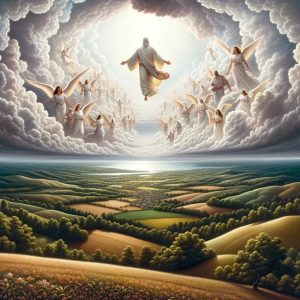“Dawn of the Third Day: 2,000 Years After Yeshua and the Promise of Renewal”


The tapestry of biblical prophecy weaves a narrative that often transcends time, presenting both immediate and distant future implications. Hosea 6:1-3 stands out as one such enigmatic passage that has captured the imaginations of scholars and believers alike. As we stand over two millennia after the crucifixion of Yeshua, can we find relevance in Hosea’s words for our times?
Historical Context: Hosea’s Message to Israel
To fully grasp the depth of Hosea’s message, we must first understand its historical context. Hosea prophesied during a tumultuous period in Israel’s history. The nation was spiritually adrift, oscillating between faithfulness and rebellion. Hosea’s marriage to Gomer, an unfaithful woman, served as a symbolic representation of Israel’s relationship with Yehovah. Amid this backdrop, Hosea’s call for repentance in chapters 6:1-3 was not just a plea but a prophetic declaration of hope.
The Two Days: A Tapestry of Faith, Struggle, and Growth
The two millennia since Yeshua’s crucifixion have been anything but uneventful for the body of believers. The early church faced persecution, doctrinal debates, and the monumental task of spreading the Gospel. From the Council of Nicaea to the Protestant Reformation, believers grappled with understanding and living out their faith.
Moreover, the church’s expansion to different cultures brought both challenges and enriching diversity. Missionary endeavors, while spreading the message of Yeshua, also had to navigate complex cultural terrains, leading to a rich tapestry of Christian traditions worldwide.
The Third Day: Anticipating a Spiritual Renaissance
The concept of the “third day” is laden with significance. Yeshua’s resurrection on the third day was a triumph over death and a testament to Yehovah’s power. If the past 2,000 years represent Hosea’s “two days,” what might the dawn of the “third day” signify for believers? Some theologians suggest it could herald a period of unparalleled spiritual revival, unity among believers, and a deeper understanding of Yehovah’s word.
Modern Implications: Living in the Threshold
As we navigate the complexities of the 21st century, Hosea’s words resonate with renewed urgency. The challenges of modernity — from rapid technological advancements to moral relativism — demand a rootedness in faith. Living on the threshold of Hosea’s “third day” means actively seeking Yehovah, fostering unity in the body of believers, and preparing our hearts for the spiritual renaissance that lies ahead.
Conclusion: Embracing the Promise of Renewal
Hosea’s call to return to Yehovah is timeless. Whether we interpret the “two days” as a symbolic representation of the 2,000 years since Yeshua’s death or as a broader allegory for periods of trial followed by renewal, the message is clear: Yehovah’s love endures, and His promise of restoration remains steadfast.
As we stand at this pivotal juncture in history, let’s draw inspiration from Hosea 6:1-3. By acknowledging Yehovah in all our ways, we position ourselves to receive the refreshing rains of His presence, guidance, and renewal.

